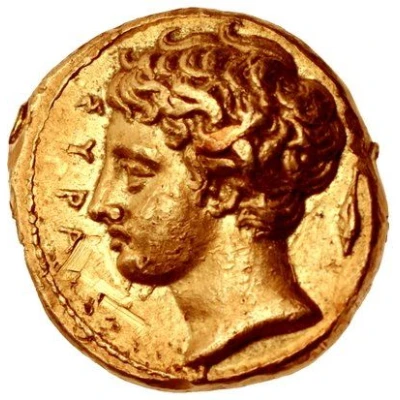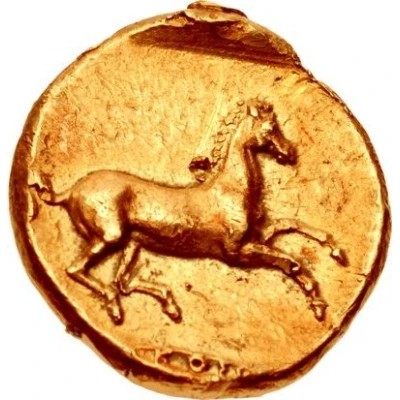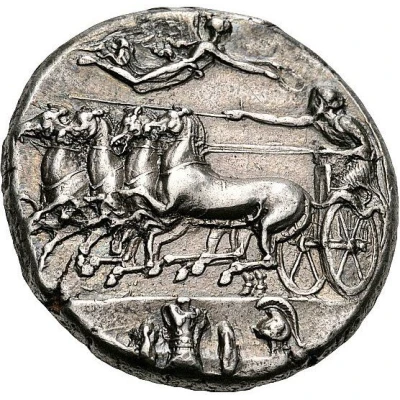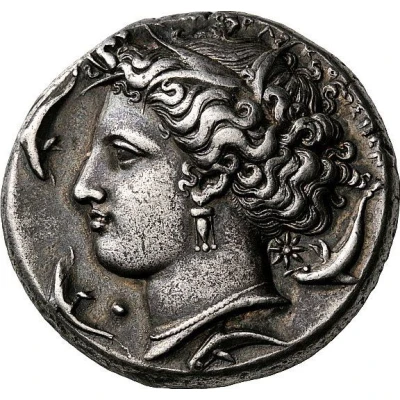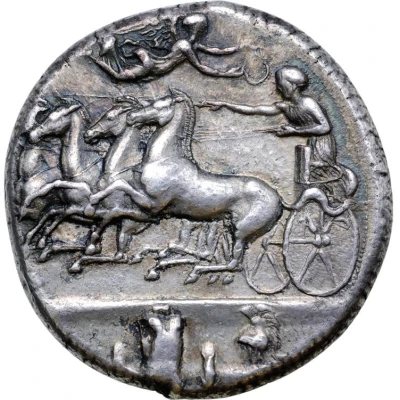
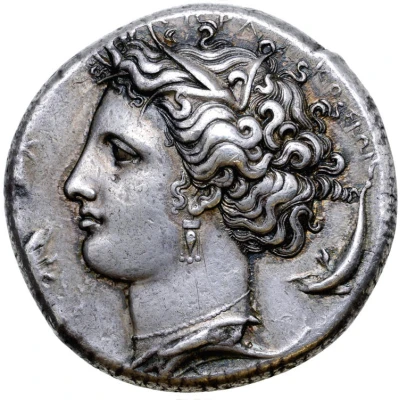

Decadrachm - Dionysius I 400 BC - 380 BC
| Silver | 43 g | 35 mm |
| Issuer | Syracuse (Sicily) |
|---|---|
| Tyrant | Dionysius I the Elder (405 BC - 367 BC) |
| Type | Standard circulation coin |
| Years | 400 BC - 380 BC |
| Value | Decadrachm (50) |
| Currency | Litra |
| Composition | Silver |
| Weight | 43 g |
| Diameter | 35 mm |
| Shape | Round (irregular) |
| Technique | Hammered |
| Orientation | Variable alignment ↺ |
| Demonetized | Yes |
| Updated | 2024-10-10 |
| Numista | N#49191 |
|---|---|
| Rarity index | 84% |
Reverse
Head of the nymph Arethusa to left, wearing a wreath of reeds, triple-pendant earring, and a pearl necklace; ΣΥΡΑΚΟΣΙΩΝ behind, four dolphins playing around her, and below the lowermost dolphin under the neck, the signature ΕΥ-ΑΙΝΕ
Script: Greek
Lettering:
ΣΥΡΑΚΟΣΙΩΝ
ΕΥ-ΑΙΝΕ
Engraver: Euainetos
Edge
Rough
Comment
Ward 295; Gillet 655.
The Dekadrachm issue began at the apex of Syracuse's power, around 405 BC, after the election of Dionysios as supreme military commander for his achievements in the war against Carthage. The power of Syracuse decline during the rule of Dionysios' son and the dekadrachm production ceased around 400 BC.
The engraver Euainetos seems to have begun his series of signed dekadrachm dies a few years after Kimon; perhaps he began as an apprentice and “graduated” to master status. His dekadrachm design superseded that of Kimon and became a paradigm for coinage throughout the classical world. His Arethousa is less human and more divine than his predecessor’s vision. The wreath of grain ears woven into her hair symbolizes the agricultural bounty of Sicily. His racing chariot is the essence of action, almost photographically frozen in time, with the charging, rearing horses appearing to levitate above the ground line. The design was widely copied on later coinage of Syracuse, as well as by the Carthaginian forces in Sicily.
Interesting fact
The Decadrachm coin was considered one of the most valuable coins in ancient Greece, with a value of 10 drachmas, hence its name "Decadrachm" which means "ten drachmas" in Greek. It was used as a means of payment for large transactions and was also a symbol of wealth and power.
Price
| Date | Mintage | VG | F | VF | XF | AU | UNC |
|---|---|---|---|---|---|---|---|
| ND (400 BC - 380 BC) | - | - | - | - | - | - |
Values in the table are based on evaluations by sales realized on Internet platforms. They serve as an indication only for Decadrachm - Dionysius I (400 BC - 380 BC) coin.
